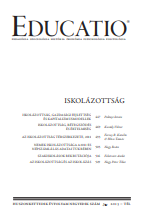Iskolázottság, gazdasági fejlettség és kapitalizmusmodelle
Educational Attainment, Economic Development and Models of Capitalism
Author(s): István PolónyiSubject(s): Economy, Education, State/Government and Education, Socio-Economic Research
Published by: Akadémiai Kiadó
Keywords: education; educational attainment; models of capitalism; distribution of educational attainment; cumulative educational attainment;
Summary/Abstract: The study compares the characteristics of the structure of education and educational attainment in the different types of European capitalism. The analysis uses an updated model (indicators and a composite index) of one – a model born in the 1960s – provided by Frederick Harris Harbison and Charles Andrew Myers. The aim of the study is to have revealed the most characteristic structure(s) of education and educational attainment in post-socialist countries. The analysis concludes that student enrolment rates for English-speaking and Nordic countries are highest – and are lowest in Mediterranean countries. Post-socialist and continental countries are between them. Most successful seems to be the Nordic model; and northern countries’ economic development has now caught up with that of Anglo-Saxon model countries over the last one and a half decades. The reason for such catching up is a growth in educational attainment and school performance. Post-socialist countries do not operate like other models of capitalism in this sense, or we might also say that all their elements are similar to one or the other. The post-socialist group of countries is characterized by having dynamic growth in student enrolment. However, the characteristics of educational attainment in these countries reflect political priorities that existed prior to the transition. The heritage of the socialist period – prioritizing training and pushing higher education into the background – still shows itself in the evolution of educational attainment; and what results from this policy are extremely high secondary educational attainment, yet a notably low rate of college graduates.
Journal: Educatio
- Issue Year: 22/2013
- Issue No: 4
- Page Range: 447-468
- Page Count: 22
- Language: Hungarian

